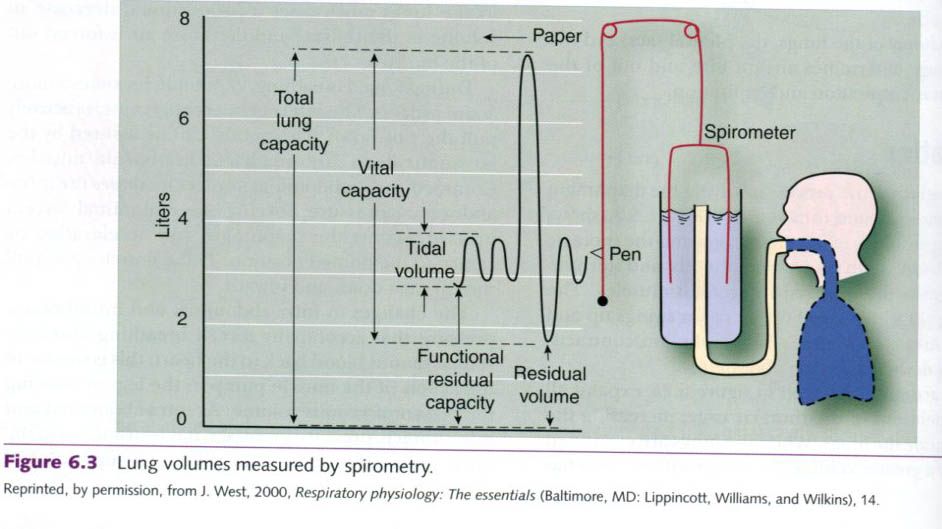The
volume of air in the lungs can be measured with a technique called spirometry.
A spirometer measures the volumes of air inspired and expired and therefore
changes in lung volume. Although more sophisticated spirometers are used today,
a simple spirometer contains a bell filled with air that is partially submerged
in water. A tube runs from the person's mouth under the water and emerges
inside the bell, just above the water level. As the person exhales, air flows
down the tube and into the bell, causing the bell to rise. The bell is attached
to a pen, and its movement is recorded on a simple rotating drum.
This
technique is used clinically to measure lung volumes, capacities, and flow
rates as an aid in diagnosing such respiratory diseases as asthma.
The
amount of air entering and leaving the lungs with each breath is known as the
tidal volume. The vital capacity(VC) is the greatest amount of air that can be expired after a maximal
inspiration. The amount of air remaining in the lungs after a maximal
expiration is the residual volume(RV). The residual volume cannot be measured
with spirometry. The total lung capacity(TLC) is the sum of the vital capacity
and the residual volume.










0 коментара:
Постави коментар